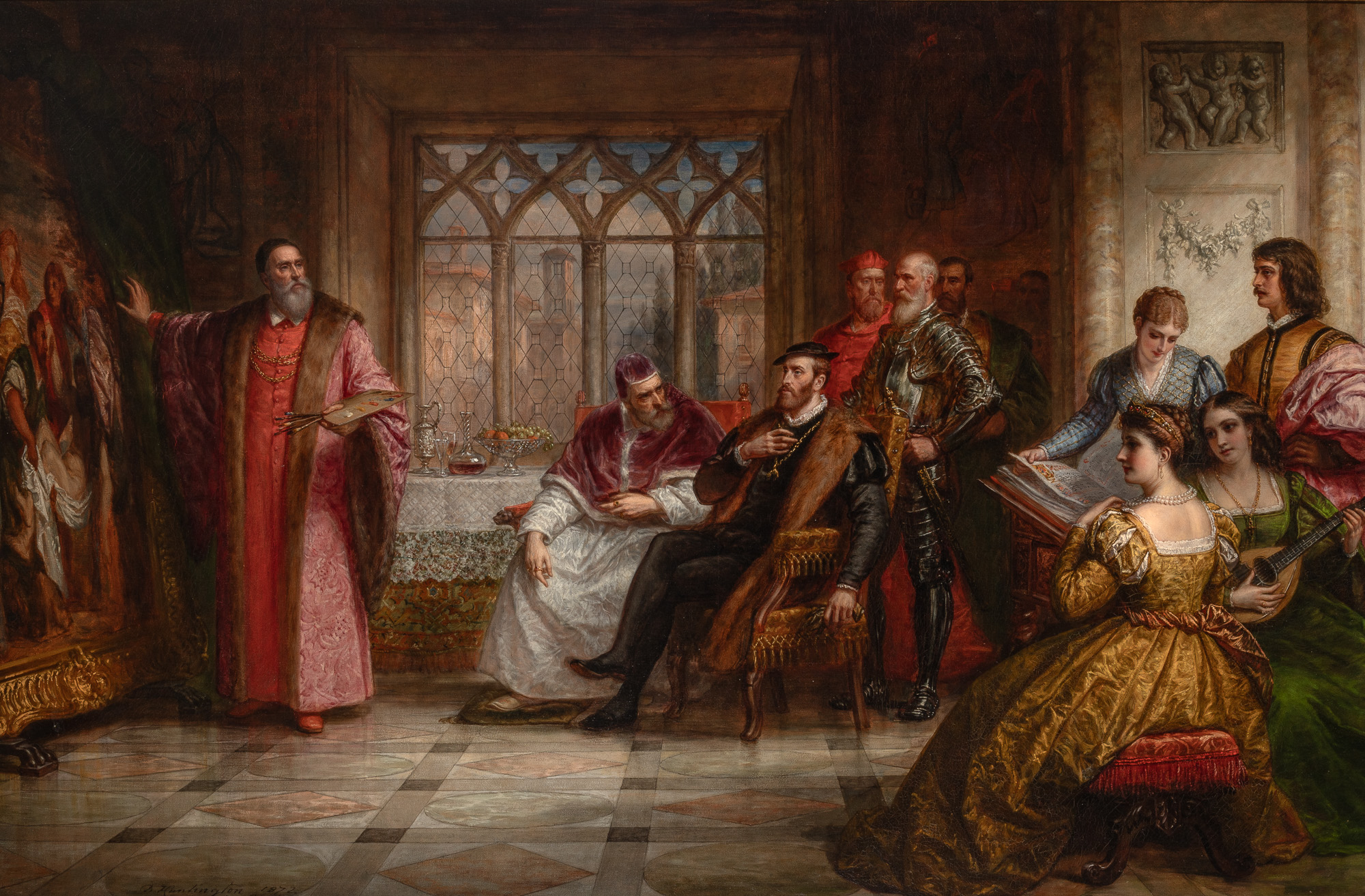
Daniel Huntington
American, 1816-1906
Daniel Huntington was a prominent American painter whose career bridged the Hudson River School’s romantic landscapes and the refined realism of 19th-century portraiture. Educated at Yale and New York University, he began his career with early landscape studies before a formative trip to Italy deepened his artistic engagement. During his time abroad, he studied Renaissance masters and absorbed the classical traditions that would inform both the composition and moral tone of his later work.
Returning to New York, Huntington became a sought-after portraitist, capturing some of the most influential figures of his era, including President Abraham Lincoln, President Martin Van Buren, and poet William Cullen Bryant. His ability to balance likeness with grandeur made his work symbolic of a nation defining its visual identity. In addition to individual portraits, he often incorporated allegorical or historical themes, subtly reinforcing ideals of character, intellect, and national purpose.
A lifelong advocate for the arts, Huntington was elected to the National Academy of Design in 1840 and served as its president from 1862 to 1869. He later held the role of vice president of the Metropolitan Museum of Art for over three decades, shaping its early growth and civic mission. His legacy endures in the dual mastery of landscape and portraiture, and in his influential stewardship of America’s cultural institutions.



